Picture yourself preparing your favorite meal, but the knife you have is blunt and rusty. Frustrating, right?
In fact, a blunt knife can be more dangerous than a sharp one. Why? Because blunt knives need so much force to cut, and in the process, they may slip or cause nasty cuts.
This blog discusses the risks of using blunt kitchen knives and how sharp knives can give you a smooth and safe cooking experience.
5 Ways to Identify a Dull Knife Instantly
Since a dull knife can mess up your cooking experience, knowing when a knife is blunt helps you avoid having a bad day in the kitchen. Here are some clear signs to help you identify if your knife needs sharpening:
1. Difficulty Cutting Soft Food
A sharp knife makes it easy to cut soft products, such as tomatoes, bread, or ripe fruits. If your knife starts tearing these items instead of making smooth, clean cuts, then you are advised to sharpen it.
2. Requires Excessive Force
If you need to press the knife down too hard when cutting an onion or a piece of meat, then that knife is blunt. Additionally, if your hand or wrist aches when using the knife, it must be blunt, and yes, it needs to be sharpened.
3. Uneven Cuts
A sharp knife allows you to cut your meat and vegetables in proper shapes; however, a blunt knife gives you jagged, unsightly cuts. To determine the blade’s sharpness, slice open a piece of paper or thin polyethylene strip.
A sharp blade will glide through, leaving a smooth, clean edge, but a blunt blade will crate rough, uneven cuts.
4. Slipping Off Surfaces
Another red flag people should look out for as a sign of a dull knife is slipping. Since a blunt knife requires more force to use, it is likely to slip off the hand during use, which can result in an injury.
5. No Shine on the Edge
Place your knife edge under a bright light to check for signs of bluntness. A dull knife may have small nicks or look rounded, while a sharp blade will have a fine, smooth edge. Place the edge of the knife at a certain angle and try to see if the reflected light bounces off the knife.
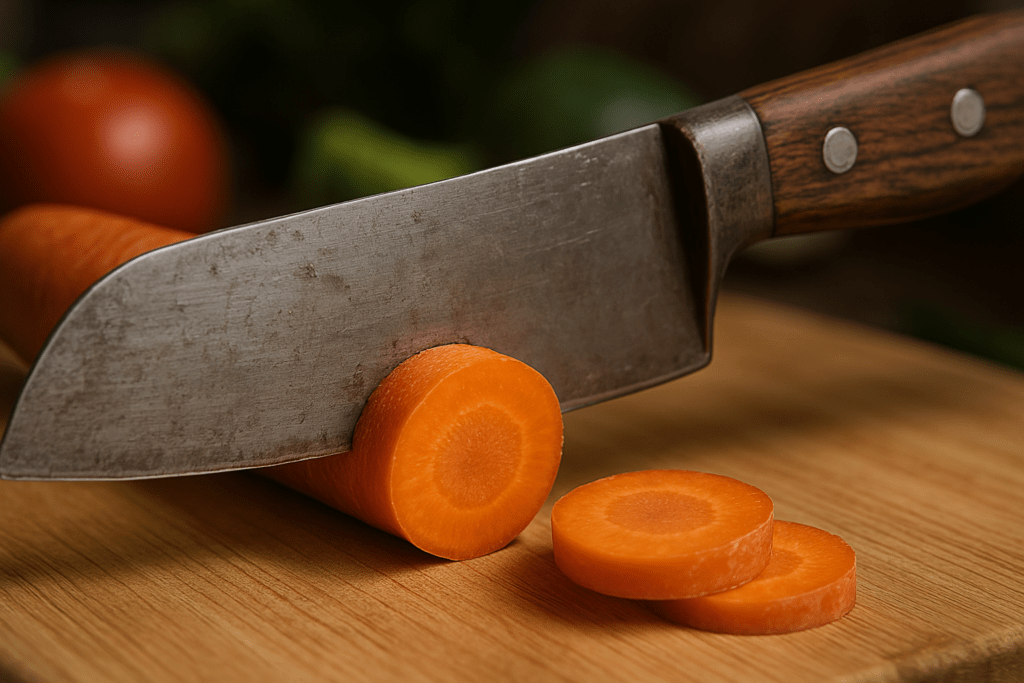
What Happens When You Use a Dull Knife?
Any blunt knife, without a doubt, is inadequate. You need a lot of force to use one when cutting meat, veggies, or fruit, that may lead to:
Cuts and Other Injuries
If you’re using a blunt knife, you will most likely apply extra force, and the knife might slip in the process. Again, blunt blades have a higher tendency of nicking your fingers and causing an injury.
Inconsistent Cuts
The beauty of cutting is your ability to maintain steady slices that leave no bumps. When you use a dull knife, chances are you have to repeatedly drag the blade through, which will leave behind a rough surface.
Additionally, dull blades are more prone to catch or snag on the meat, making it look less attractive.
Ruins your Food
If you use a blunt knife, you are likely to ruin your food. A blunt knife will give irregular cuts and tear through the food rather than slice it. Besides, it could also affect the appearance of delicate meals, such as fish and vegetable dishes.
3 Ways to Sharpen Knives Like a Pro
A blunt knife consumes more time during cooking, and the danger of mishap is high. Therefore, keeping your blades sharp is crucial to keeping your kitchen safe and efficient.
Here’s how to keep your knives sharp at all times:
- Whetstone Sharpening: This is an old method that involves rubbing the blade parallel to a whetstone. For accurate results, it gives you control over the sharpening process.
- Honing Rod Sharpening: You can use a honing rod to smoothen the edge of your blade during sharpening. A honing rod is a sharpening tool that can sharpen a blade without having to shave any metal off the blade.
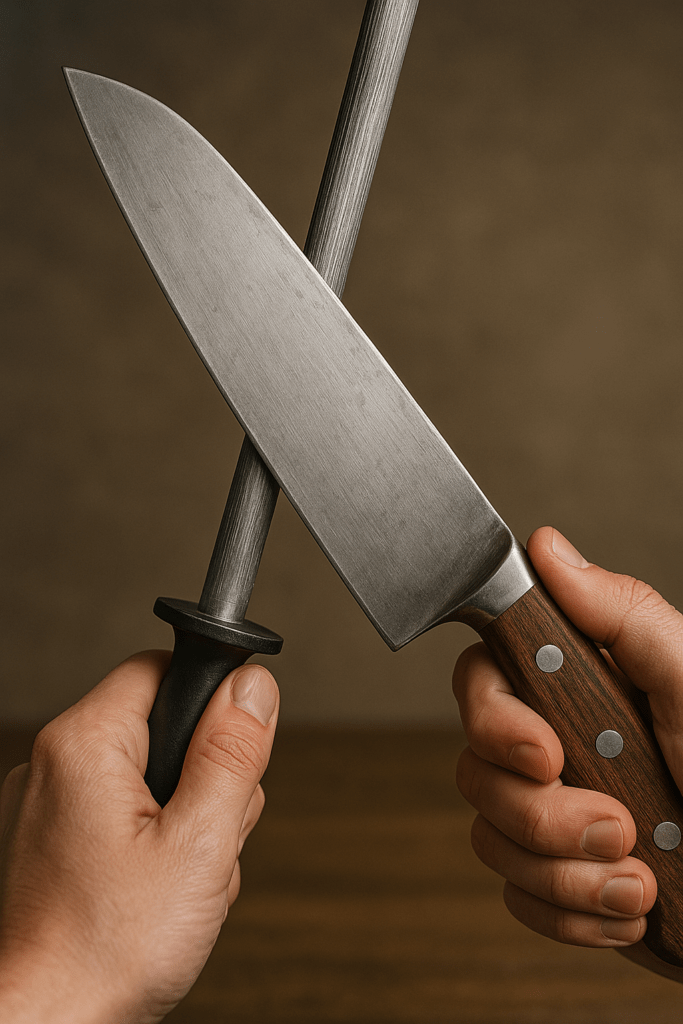
- Electric Knife Sharpening: Use an electric knife sharpener if you wish to get fast results. Its abrasive wheels restore the knives’ sharp edges and sheen with very less efforts.
Tips to Preserve Your Knife’s Sharpness
After sharpening your knife, it is essential to ensure that it remains sharp for a long period of time. Consider the following knife maintenance tips:
- Avoid cutting on extra hard surfaces: Newbies often use hard surfaces for their cutting boards like marble or glass, which harm the blade. However, use slicing boards made of plastic or hardwood, which are gentler on the blade.
- Wash your knife with the hand: Dishwashers can dull or chip both the handle and the blade due to rough handling. To keep your knives shiny and sharp, wash them with warm, soapy water instead.
- Store them properly: With the help of a knife sheath, the blade will not be exposed to extra wear. Do not put your knife in a drawer since it may strike other items.
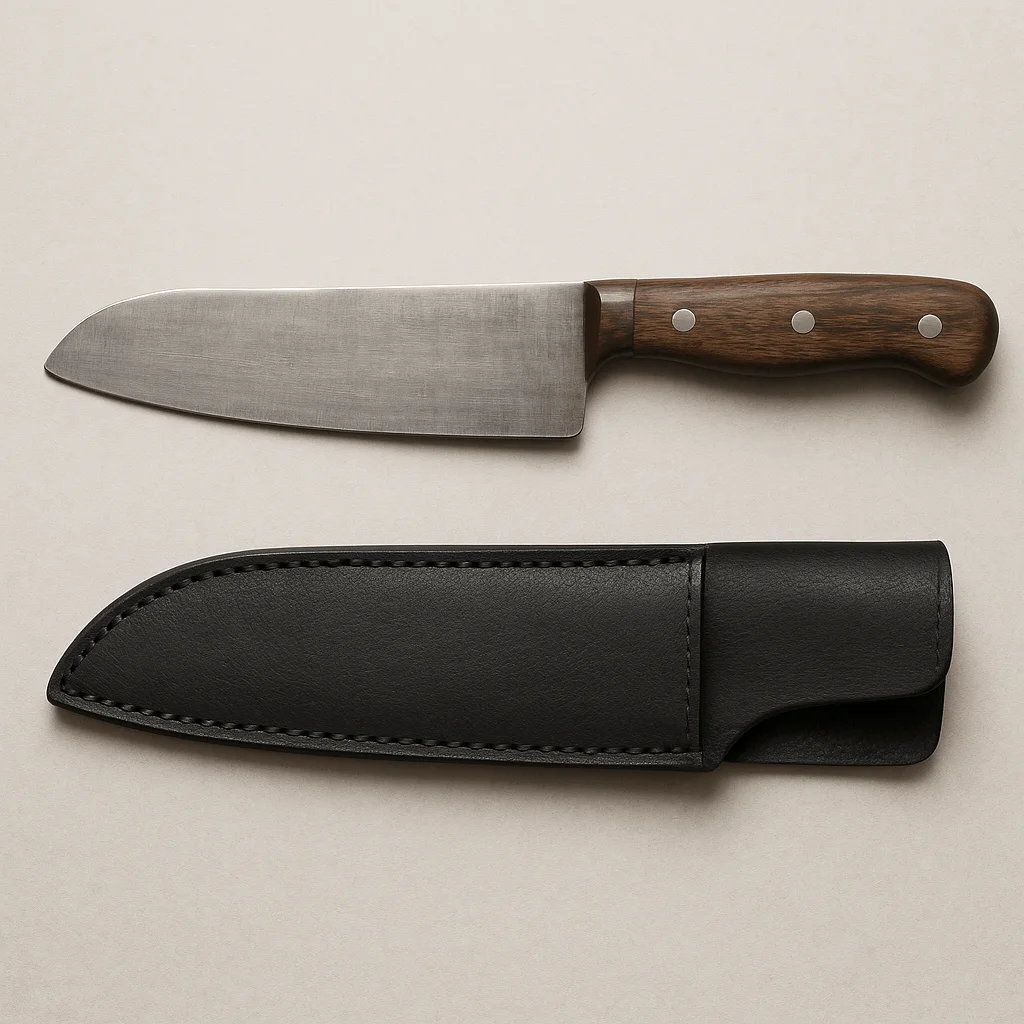
Conclusion Why are Dull Knives Dangerous
Apart from sharpening your knives, and maintaining them, it is also important to use your knives under the right conditions.
For example, using surfaces and cutting boards made from materials like wood will enhance your knives’ lifespan.
Finally, one thing that can actually help increase durability is the proper maintenance of the knives. A well-maintained knife is not only an essential kitchen tool but can also become a long-term investment for all your cooking needs!

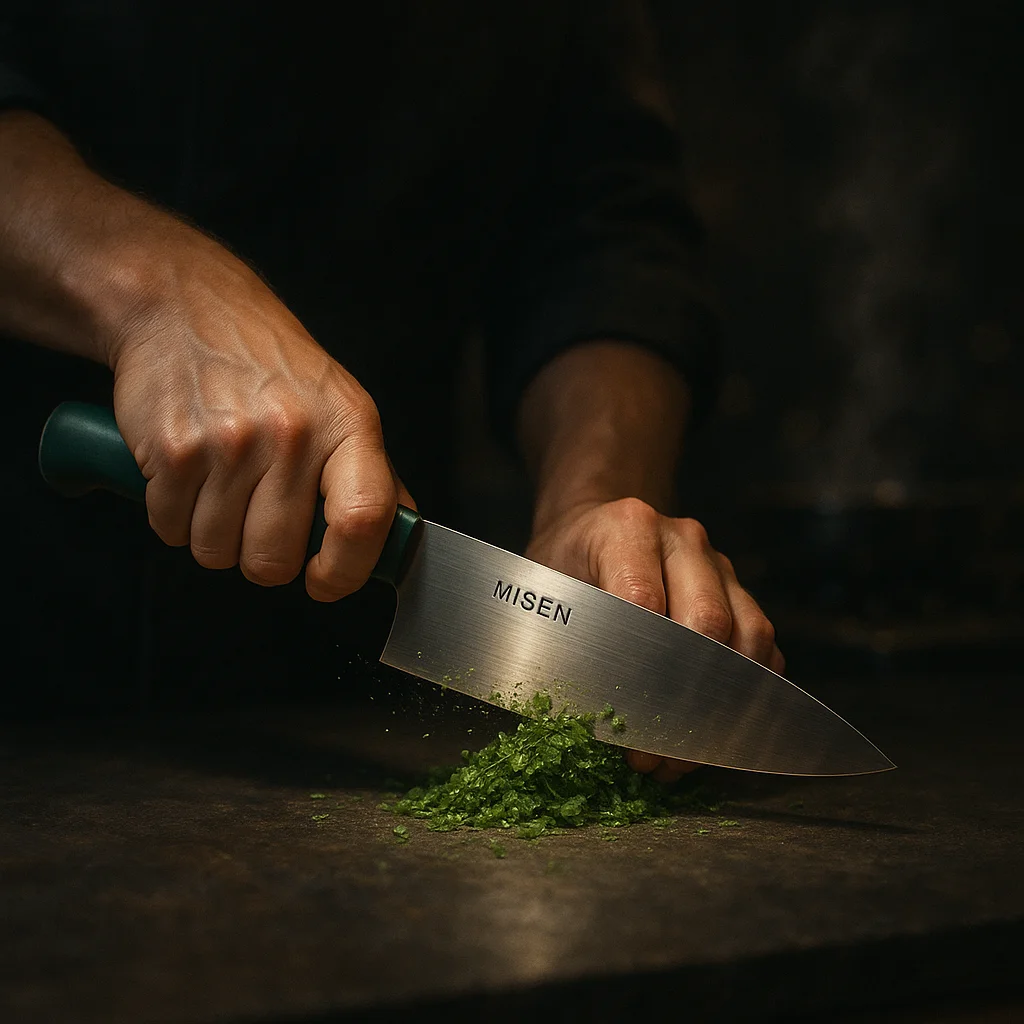
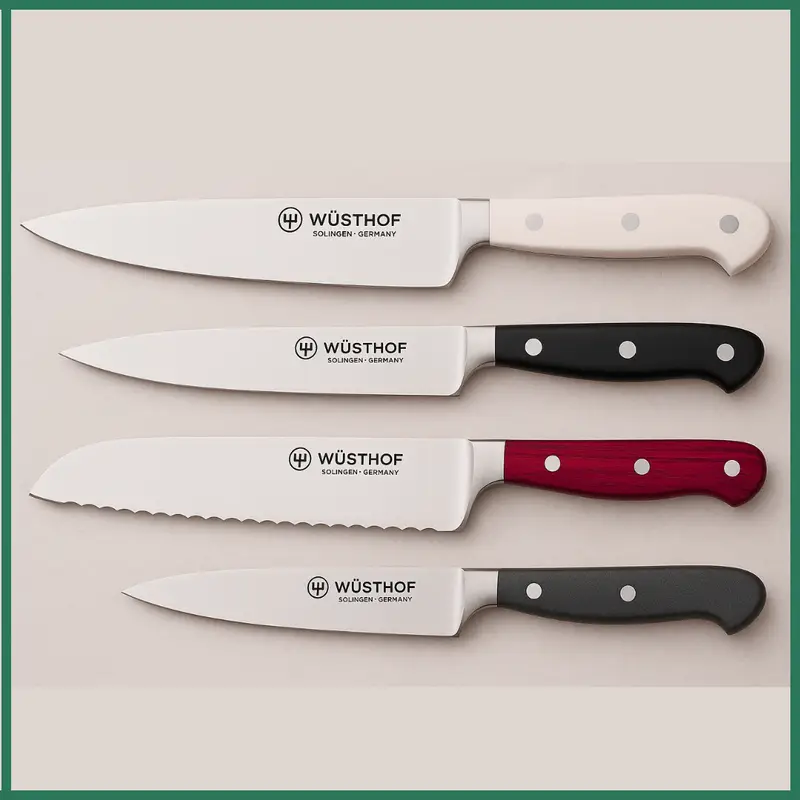
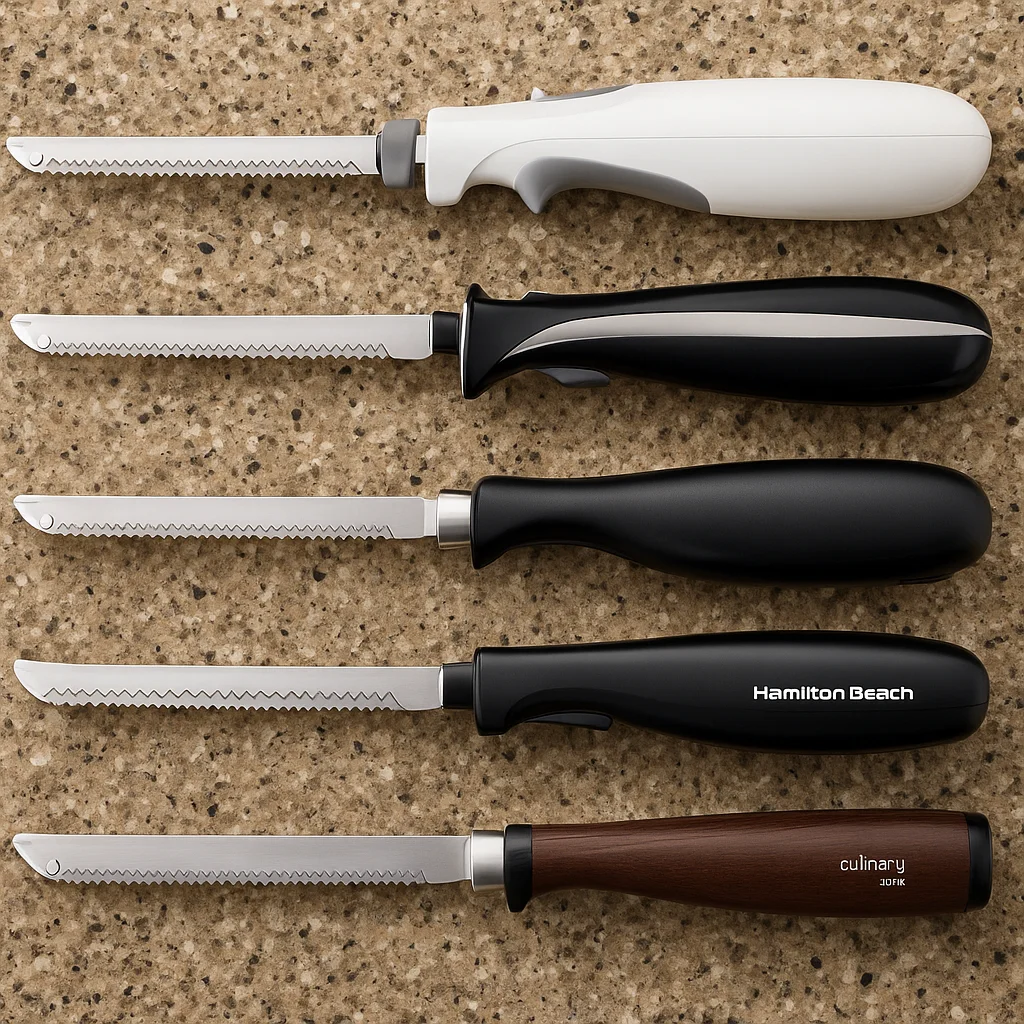
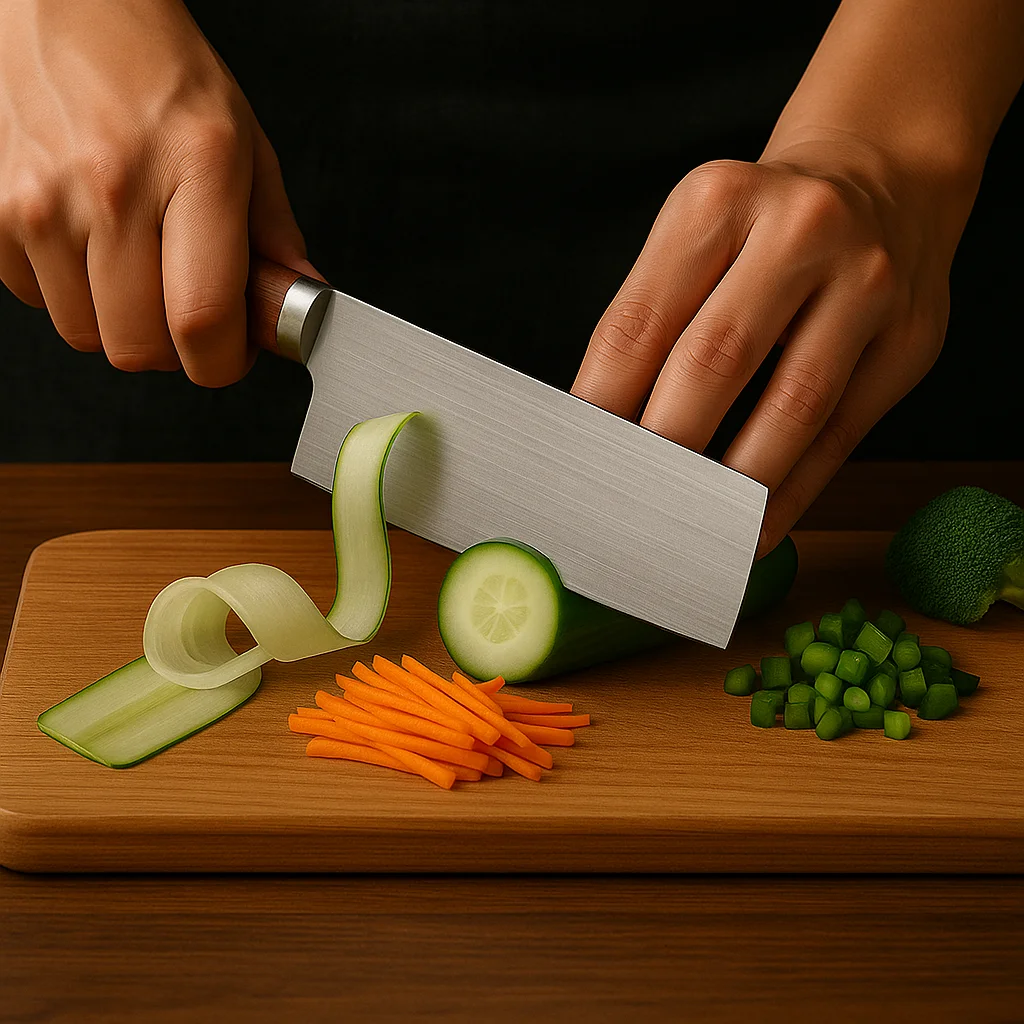
Leave a Reply